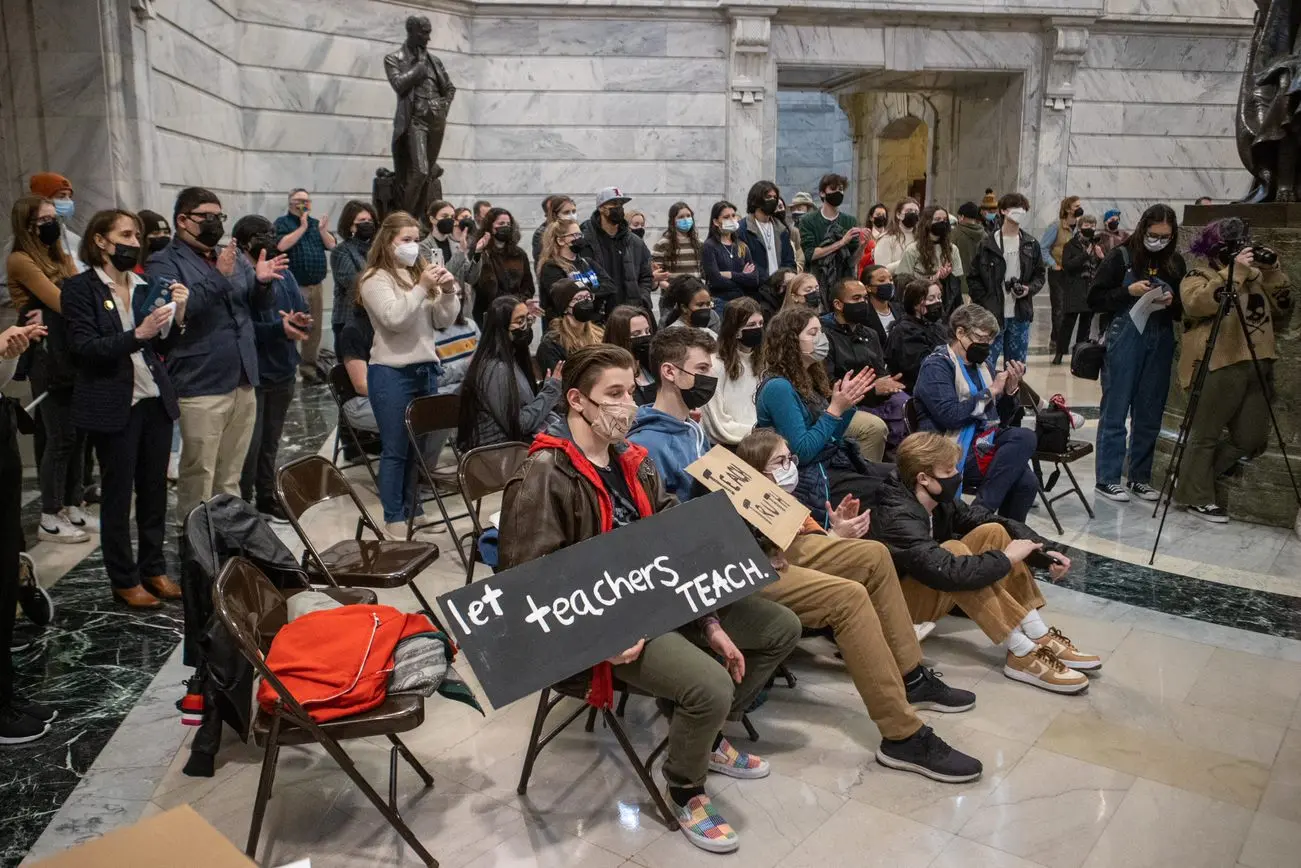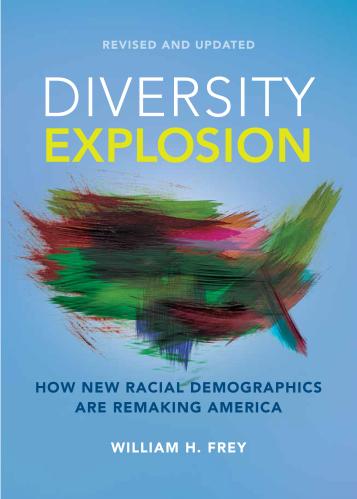Beginning last year and continuing in 2022, dozens of states—mostly those with Republican-dominated legislatures and governors—have proposed laws and executive orders banning the teaching of critical race theory (CRT) or, more broadly, books and courses on America’s diversity. Perhaps most noteworthy was newly elected Virginia Governor Glenn Youngkin’s “day one” executive order banning the teaching of critical race theory and other “divisive concepts.” Other Republican governors who have been vocal about these bans include Ron DeSantis of Florida and Greg Abbott of Texas.
Many of these laws were embedded in broader initiatives to address sometimes legitimate parental concerns about public schools’ capabilities to deliver quality educational experiences during the COVID-19 pandemic. But the specific focus on banning the teaching of racial history smacks of political motivation by a party that is trying to ignore this nation’s rising diversity and appeal to its largely white, culturally conservative voter base. In fact, the term “critical race theory”—a much narrower academic framework than what is commonly taught in K-12 courses on American racial history—is intentionally used as a scare tactic to appeal to that base.
Surveys taken in Virginia, Florida, and Texas show underwhelming support for banning the teaching of racial history and diversity in public schools among most respondents, including parents. Moreover, a February nationwide CBS poll found that more than eight in 10 Americans oppose banning books that discuss race or slavery from schools, and more than six in 10 believe that teaching about race in America makes students understand what others went through.
This is noteworthy because the demography of the nation’s school children and their parents is distinct from nonparent voters of the traditional Republican base—older white voters, especially those without college educations. Therefore, it is fair to say that the political strategy behind these laws, particularly in rapidly diversifying Republican states, is really intended to appeal to nonparent voters who are fearful of the nation’s changing demography.
America’s youth population is becoming more diverse everywhere
An unfortunate consequence of new laws banning the teaching of diversity is that they will deprive our youth—the most racially diverse part of our population—with an understanding of how various historical factors ranging from slavery to discriminatory practices toward Latino or Hispanic and Asian immigrants have shaped both divisions and improvements in race relations that still exist in society today.
For the past two decades, the white youth population in the U.S. has been on the decline due to the aging of the overall population. Because immigrants and their U.S.-born children, together, are younger than the rest of the population, recent decades’ immigration from Latin America, Asia, and elsewhere served to bolster the size of the nation’s young population.
The 2020 census shows that, for the first time, children of color (those who identify as Latino or Hispanic, Asian American, Black, Native American, or with two more races) now comprise more than half (53%) of the nation’s under-age-18 population, as well as in 21 states (download Table A). Even population projections taken before the 2020 census showed that more than half of the young labor force population will be nonwhite in 2030.

 Clearly, children of color are key contributors to the changing demographics of America’s youth population. They have not only stemmed a sharp decline in that youth population but, as they age, will also be driving most of the growth in the nation’s future labor force.
Clearly, children of color are key contributors to the changing demographics of America’s youth population. They have not only stemmed a sharp decline in that youth population but, as they age, will also be driving most of the growth in the nation’s future labor force.
The fact that children of color constitute well over a majority of the nation’s K-12 students dictates that both white and nonwhite children need to become familiar with all elements—both good and bad—of the nation’s racial and ethnic history. This is especially the case in segregated schools, which still pervade most of the nation.
Seniors will become more dependent on a shrinking younger population
A proper education for America’s school-age population is especially important because the nation’s aging population will become increasingly dependent these younger diverse generations for their economic well-being. With the youth population comprising an increasingly smaller share of the overall population, their presence and success in tomorrow’s labor force is even more critical.
 The 2020 census showed a small absolute decline in the under-age-18 population over the 2010-2020 decade. And if immigration remains at the low levels of the past two years, there could be close to negative growth in both the child and labor-force-age populations in the decade ahead.
The 2020 census showed a small absolute decline in the under-age-18 population over the 2010-2020 decade. And if immigration remains at the low levels of the past two years, there could be close to negative growth in both the child and labor-force-age populations in the decade ahead.
In contrast, the ranks of the senior population will swell as baby boomers continue to advance beyond age 65. As a group, seniors increased by nearly two-fifths in the 2010-2020 decade and are projected to grow another 30% during the 2020s. This will increase the old age dependency ratio (defined in Figure 3) at the same time the child dependency ratio diminishes.
 In the decades to come, children will be a far rarer demographic commodity than they were in the past. And not only are these children America’s future, but they will also become an important asset to our labor force, tasked with supporting an increasingly large retiree population in a variety of ways, including contributions to Medicare and Social Security.
In the decades to come, children will be a far rarer demographic commodity than they were in the past. And not only are these children America’s future, but they will also become an important asset to our labor force, tasked with supporting an increasingly large retiree population in a variety of ways, including contributions to Medicare and Social Security.
Racial history teaching bans are targeting nonparent voters
The recent Republican-initiated state bans on teaching racial history or diversity in schools seem to be targeted to voters who are not parents of school-aged children. In both the 2020 presidential election and the 2021 Virginia gubernatorial election, top Republican-voting groups were older white voters, especially those who did not hold college degrees. Younger people, in general, and all racial minorities voted decidedly Democratic.
This divide between older white populations on the one hand and younger minorities on the other is emblematic of what I have called the “cultural generation gap.” Older white Americans—especially those fearful of the nation’s changing demography—respond to political messages that favor curtailing immigration, suppressing minority votes, and providing less government support for education or other social service programs targeted to younger, more diverse generations, who they do not see as “their” children.
These voting blocs were on the frontlines of the Trump administration’s “war on demography,” which persists today. A July 2021 Pew Research Center survey showed that 35% of white residents age 65 and older feel that a declining share of white people in the U.S. is either “somewhat” or “very” bad for society, compared with just 5% who think it is either somewhat or very good. Among all residents age 18 to 29, the comparable figures are 13% versus 29%. Moreover, among Republicans age 65 and older, just 18% see increased public attention to slavery and racism in the history of America as somewhat or very good, compared with 54% who believe it to be somewhat or very bad. Among respondents age 18 to 29, the responses are 66% and 16%, respectively.
Given this generation gap, it appears that Republican-initiated education bans on racial history are not directed to parents as much as to the larger group of voters who do not reside in households that contain parents of young people. Among eligible voters nationally, only 30% reside in parent households.
 Moreover, eligible voters who reside outside of parent households look more like the Republican base than those in parent households. Among the former, 43.6% are white eligible voters without college educations, and 60% are over age 50. In contrast, only about one-third of eligible voters in parent households are white and don’t have a college degree, and 81% are under age 50. The latter are more diverse, as well, with two-fifths identifying as a racial or ethnic minority compared with 30% of voters not living in parent households.
Moreover, eligible voters who reside outside of parent households look more like the Republican base than those in parent households. Among the former, 43.6% are white eligible voters without college educations, and 60% are over age 50. In contrast, only about one-third of eligible voters in parent households are white and don’t have a college degree, and 81% are under age 50. The latter are more diverse, as well, with two-fifths identifying as a racial or ethnic minority compared with 30% of voters not living in parent households.
 These demographic disparities between parent household voters and all others exist in the three states where bans on teaching racial and ethnic diversity are particularly prominent: Virginia, Florida, and Texas. As Figure 6 indicates, white eligible voters without college degrees are more prominent outside of parent households than within them, while racial and ethnic minority eligible voters are more prevalent among parent households. And eligible voters outside of parent households are far older (between 57% and 64% are over age 50) than those residing in parent households (about 80% are under age 50). Similar disparities are discernable in almost all states, including those where efforts are being made to ban the teaching of racial history or diversity (download Table B).
These demographic disparities between parent household voters and all others exist in the three states where bans on teaching racial and ethnic diversity are particularly prominent: Virginia, Florida, and Texas. As Figure 6 indicates, white eligible voters without college degrees are more prominent outside of parent households than within them, while racial and ethnic minority eligible voters are more prevalent among parent households. And eligible voters outside of parent households are far older (between 57% and 64% are over age 50) than those residing in parent households (about 80% are under age 50). Similar disparities are discernable in almost all states, including those where efforts are being made to ban the teaching of racial history or diversity (download Table B).
 This suggests that voters in nonparent households, with their strong Republican-leaning demographic profile, are the real target of the party’s scare tactics associated with critical race theory and similar subjects. In fact, a recent analysis of Virginia’s gubernatorial contest showed that a “silver surge” in turnout among the Republican-leaning voters over age 65 contributed to Youngkin’s victory.
This suggests that voters in nonparent households, with their strong Republican-leaning demographic profile, are the real target of the party’s scare tactics associated with critical race theory and similar subjects. In fact, a recent analysis of Virginia’s gubernatorial contest showed that a “silver surge” in turnout among the Republican-leaning voters over age 65 contributed to Youngkin’s victory.
The impact on children should not be overlooked
The Republican playbook appears to be engineered to inflame the cultural generation gap in a variety of ways. As political writer Ronald Brownstein has observed, the party’s dominance of state legislatures has promoted culturally divisive polices regarding abortion, voting rights, protest rights, LGBTQ rights, and gun control, in addition to bans on teaching the fundamentals of the nation’s racial and ethnic history in public schools. While each of these political wedge issues is detrimental to forging a more cohesive and integrated democracy, the ban on making diversity education available to young people may be the most consequential.
One impact will be to block new diverse generations from understanding the racially discriminatory forces that shaped current racial inequalities. As Brownstein noted: “Though the measures have been promoted mostly as a defensive tool (to prevent white students from feeling guilty), many see them in an equally important offensive goal: discouraging the growing number of nonwhite students, as they reach voting age, from viewing systemic discrimination as a problem that public policy should address.”
This is especially problematic for a nation that is rapidly aging and increasingly reliant on future generations of diverse youth. These future generations need to learn how and why America’s current sharp racial and ethnic divides came into being. This will put them in a position to offer solutions that will contribute to both their own well-being and that of the older generations that will become increasingly dependent on them.




